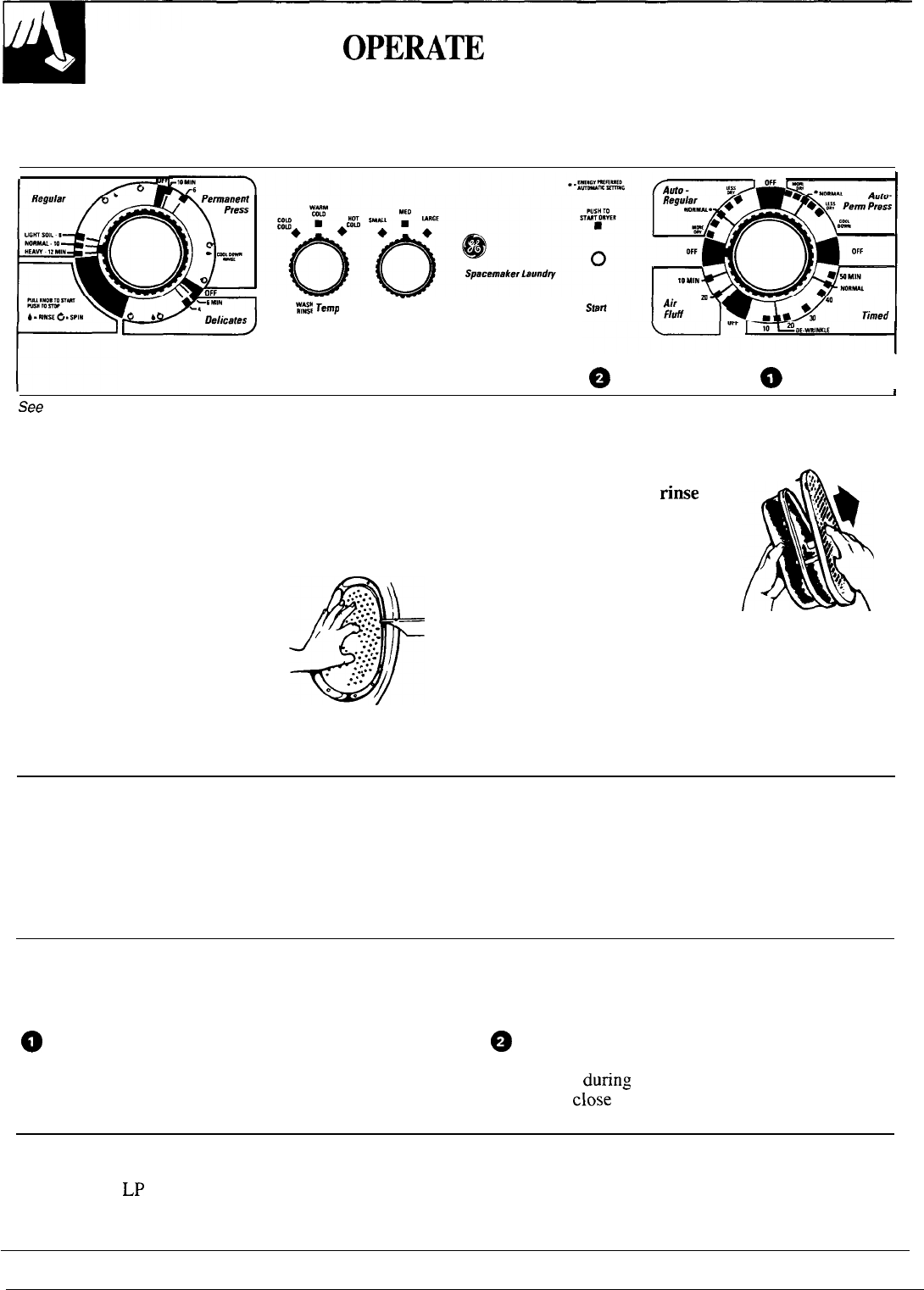
HOW TO
OPEWTE
YOUR DRYER
WARNINGTO reduce the risk of fire, electric shock, or injury to persons when using your
appliance, read the IMPORTANT SAFETY INSTRUCTIONS before operating this appliance.
r
=
“--
:$:
Temp
Load Size
I
e
Q
I
See
How to Operate Your Washer section for the above Washer controls.
,
Check the Lint Filter
Clean the lint filter each time the dryer is used.
Always be sure the lint filter is in place.
A
Do not run the dryer with the lint screen
loose, damaged, blocked or missing. Doing
so can cause overheating, damage fabrics
and be a fire hazard.
The lint screen is located inside
the dryer drum, on the back wall.
To clean:
1. Use the finger holes to pull
the lint screen straight out.
8
.
. .
.
..
. .
.
.
. . .
.
. .
.
\
. . . .
.
. .
.
. . .
.
—
/
. .
.
.
.
...
. .
. .
. .
.
. . .
.:.
....
.
. .
.
. .
.
.
.
.
.
.
.
.
.
.
.
/
2. Lightly squeeze the body,
PULL STRAIGHT OUT
as shown while pulling the cover off.
3. ROLL lint off the screen with
your fingers.
Do not
rinse
or
wash the screen.
4. Replace the cover
on the body
of the lint screen.
5. Before replacing the lint
screen, remove any lint from
the wire mesh on the back
wall (behind the lint screen).
1“
\
6. Push the lint screen straight
SQUEEZE BODY;
back until it snaps into place.
PULL COVER OFF
Sort and Load the Clothes
Good sorting for the dryer begins at the washer.
If you do mix various types of fabrics in your load,
Generally, if clothes are sorted right for washing,
set the controls for the lighter-weight fabrics and
they’re sorted right for drying. See the How to Sort
remove when dry. Reset controls for the remaining
the Clothes section.
heavier fabrics.
Set the Controls
See the Suggested Fabric and Drying Selections guide.
~
Cycle Selector.
~
Start Button.
Turn the Cycle Selector to the desired cycle setting.
Press the Start button to start the dryer. (Opening
The selector may be turned in either direction.
the door
during
operation stops the dryer. To
restart,
close
the door and press the Start button.)
NOTE: Drying times will vary according to the type of heat used (electric,
natural gas or
LP
gas), size of load, types of fabrics, wetness of clothes and
condition of exhaust ducts.
14


















